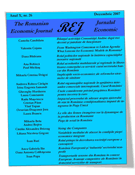Abstract:
Danube’s floodplain is one of the regions in Romania that have undergone some of the most dramatic changes in the last 100 years, as it was transformed for agricultural purposes only to be later restored to its natural state, as the losses proved to be greater than the benefits. This region is considered one of the world’s most important ecoregions. However, in the XX-th century Danube’s natural system was affected by human activities. Great resources meant great opportunities for exploitation. Dams were built and large areas were drained for agricultural purposes and flood protection. Thus, much of Danube’ wetlands, floodplains and floodplain forests were destroyed. The increasing pressure of human activities and unsustainable agricultural practices didn’t prove to be cost-effective, and benefits were outrun by losses. Economical and environmental costs showed that action had to be taken. Therefore, in 2000, it was signed the declaration that created the Lower Danube Green Corridor, Europe's largest cross border wetlands protection and restoration area.
